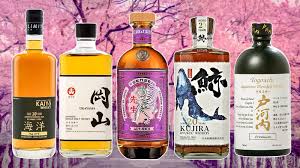Introduction to Japanese Whiskey
Japanese whiskey has garnered international acclaim for its exceptional quality, craftsmanship, and unique flavor profiles. What began as an inspired endeavor to adopt Scottish methods has evolved into a distinct art form, producing some of the finest whiskeys in the world. This pillar content explores the rich history, production techniques, notable brands, and cultural significance of Japanese whiskey.
History and Evolution
Origins and Early Influences
Japanese whiskey traces its origins back to the late 19th century when Shinjiro Torii and Masataka Taketsuru pioneered the industry. Inspired by Scotch whiskey production, they sought to create a distinctly Japanese spirit that would rival its Scottish counterparts.
Development and Growth
The early 20th century saw the establishment of iconic distilleries such as Yamazaki and Yoichi, marking a period of experimentation and refinement in whiskey-making techniques. By the mid-20th century, Japanese whiskey had gained recognition globally, winning prestigious awards and earning a reputation for excellence.
Production Methods
Ingredients
Japanese whiskey typically uses malted barley as the primary grain, although other grains like corn and rye are occasionally employed. Water quality is crucial, with distilleries often located near pristine water sources to ensure purity.
Mashing and Fermentation
The mashing process involves grinding malted barley and mixing it with hot water to extract fermentable sugars. The resultant mash is fermented using yeast to produce alcohol.
Distillation
Japanese distilleries employ both pot stills and continuous column stills, each contributing unique characteristics to the final product. Distillation plays a crucial role in refining flavors and achieving the desired smoothness.
Maturation
Whiskey in Japan matures in oak barrels, often sourced from America, Europe, and Japan itself. The aging process can significantly influence flavor, imparting notes of vanilla, spice, and oak.
Popular Japanese Whiskey Brands
1. Yamazaki
- Overview: Established in 1923, Yamazaki is Japan’s oldest whiskey distillery, known for its diverse range of expressions and innovative blending techniques.
- Signature Products: Yamazaki Single Malt 12 Year Old, Yamazaki 18 Year Old, Yamazaki Mizunara Cask.
2. Hibiki
- Overview: Introduced by Suntory in 1989, Hibiki blends are celebrated for their harmonious balance and elegant profiles.
- Signature Products: Hibiki Japanese Harmony, Hibiki 17 Year Old, Hibiki 21 Year Old.
3. Nikka
- Overview: Founded by Masataka Taketsuru, Nikka operates two distilleries—Yoichi and Miyagikyo—each contributing distinct flavors to its diverse whiskey portfolio.
- Signature Products: Nikka Whisky From The Barrel, Nikka Coffey Malt, Nikka Yoichi Single Malt.
4. Ichiro’s Malt
- Overview: Founded by Ichiro Akuto, this independent distillery has gained acclaim for its innovative approach to blending and maturation.
- Signature Products: Ichiro’s Malt Chichibu The First, Ichiro’s Malt Mizunara Wood Reserve, Ichiro’s Malt & Grain.
5. Chichibu
- Overview: A relatively new distillery founded in 2008, Chichibu has quickly earned a reputation for producing high-quality single malts with a focus on craftsmanship.
- Signature Products: Chichibu The First, Chichibu On The Way, Chichibu The Peated.
Japanese Whiskey Regions
1. Honshu
- Yamazaki: Located near Kyoto, known for its soft water and diverse climate.
- Yoichi: Hokkaido-based distillery noted for its rich, peaty flavors.
2. Kyushu
- Miyagikyo: Situated on the southern island of Kyushu, famed for its elegant and fruity whiskies.
3. Other Regions
- Chichibu: Located in Saitama Prefecture, it represents a new wave of Japanese whiskey production.
Japanese Whiskey Culture
Japanese whiskey culture reflects a blend of tradition and innovation. Whiskey bars in major cities like Tokyo and Osaka offer extensive selections and serve as hubs for enthusiasts and connoisseurs alike. Whiskey appreciation extends to rituals such as the highball—a popular whiskey cocktail—and elaborate tasting events showcasing rare and limited-edition releases.
Global Influence and Recognition
Japanese whiskey’s rise to prominence on the global stage has been marked by numerous accolades and awards, cementing its status as a formidable competitor to Scotch and other whiskey varieties. Its meticulous craftsmanship and attention to detail have garnered admiration from whiskey aficionados worldwide.
Conclusion
Japanese whiskey continues to captivate and inspire whiskey enthusiasts with its rich history, diverse flavors, and unwavering commitment to quality. As distilleries experiment with new techniques and expressions, the future of Japanese whiskey promises continued innovation and excellence.
Whether you’re a seasoned connoisseur or a curious newcomer, exploring the world of Japanese whiskey offers a journey through tradition, craftsmanship, and unparalleled taste.

